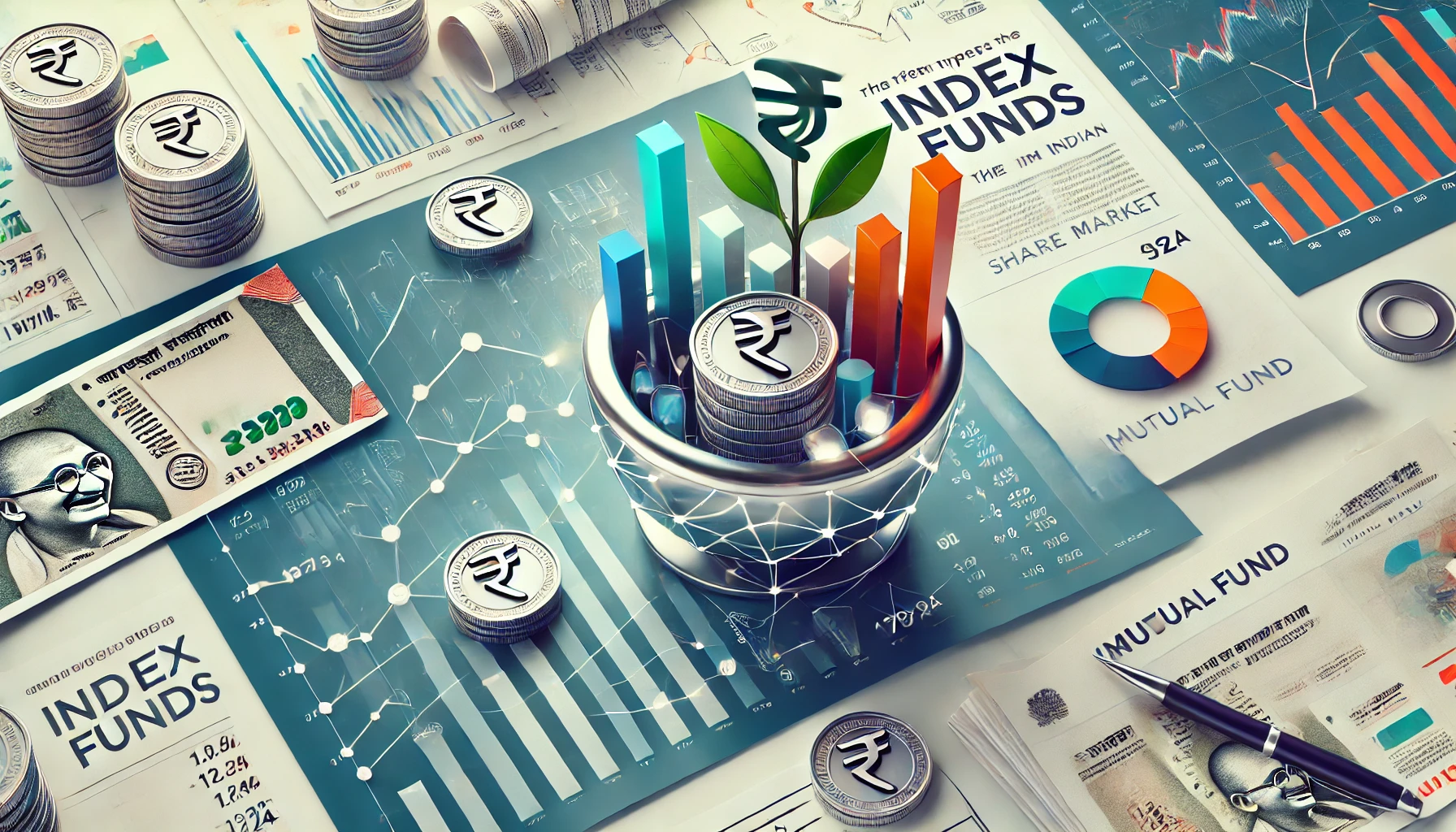In mutual fund investments, the risk-return trade-off is a fundamental concept that helps investors balance the potential risks and rewards. While high returns can be tempting, they often come with increased risks. The trade-off between risk and return enables investors to select funds that align with their financial goals, risk tolerance, and time horizon. This article explores the risk-return trade-off in Indian mutual funds, factors influencing risk and return, and how to make informed investment choices.
Table of Contents
- Introduction to Risk-Return Trade-Off
- Why Understanding the Risk-Return Trade-Off Matters
- Factors Affecting Risk and Return in Mutual Funds
- Types of Mutual Funds by Risk Levels
- Historical Analysis of Risk-Return Ratios in Indian Mutual Funds
- Strategies for Balancing Risk and Return
- How to Choose Mutual Funds Based on Risk-Return Trade-Off
- Real-World Examples of Risk-Return Trade-Off
- Conclusion
1. Introduction to Risk-Return Trade-Off
The risk-return trade-off is a principle where higher potential returns are generally accompanied by higher risks. This relationship means that low-risk investments typically yield lower returns, while investments with higher returns are often more volatile. Mutual funds offer varying risk-return profiles, from stable debt funds to more volatile equity funds, allowing investors to choose based on their goals.
2. Why Understanding the Risk-Return Trade-Off Matters
A clear understanding of the risk-return trade-off enables investors to:
- Align Investments with Financial Goals: Choose funds that match their financial aspirations and timelines.
- Manage Portfolio Risk: Balance risk across investments to ensure long-term portfolio stability.
- Maximize Potential Returns: Take calculated risks in areas that align with growth objectives.
By understanding this balance, investors can build a portfolio that suits their risk appetite and offers consistent growth.
3. Factors Affecting Risk and Return in Mutual Funds
Several factors impact the risk and return potential of mutual funds:
- Market Conditions: Economic changes, political events, and global factors influence market performance and mutual fund returns.
- Fund Type: Equity funds carry higher risks and potential returns, while debt funds are generally lower risk with stable returns.
- Fund Management: The strategies and expertise of fund managers also play a crucial role in performance.
- Investment Horizon: Longer horizons allow for higher risk tolerance, as short-term fluctuations even out over time.
- Interest Rates: Debt funds are especially sensitive to interest rates, affecting their returns and risk levels.
4. Types of Mutual Funds by Risk Levels
Mutual funds in India can be classified based on their risk profiles:
1. Low-Risk Funds
Low-risk funds include debt funds, such as liquid funds and ultra-short-term funds, which invest in government securities and high-rated corporate bonds.
| Fund Type | Example | Risk Level |
|---|---|---|
| Liquid Funds | SBI Liquid Fund | Low |
| Ultra-Short-Term | HDFC Ultra Short Term Debt Fund | Low |
2. Medium-Risk Funds
Moderate-risk funds include hybrid and balanced funds, which invest in a mix of equity and debt, providing a balance of stability and growth potential.
| Fund Type | Example | Risk Level |
|---|---|---|
| Balanced Funds | ICICI Prudential Balanced Fund | Medium |
| Hybrid Funds | Kotak Hybrid Equity Fund | Medium |
3. High-Risk Funds
High-risk funds include equity funds such as large-cap, mid-cap, and sectoral funds, which focus on stocks for high growth potential but come with increased volatility.
| Fund Type | Example | Risk Level |
|---|---|---|
| Large-Cap Funds | Axis Bluechip Fund | High |
| Mid-Cap Funds | Mirae Asset Midcap Fund | High |
5. Historical Analysis of Risk-Return Ratios in Indian Mutual Funds
Analyzing historical risk-return ratios helps investors understand the performance trends of different fund types. Here’s a snapshot of returns from various mutual funds in India over the past five years:
| Year | Debt Fund Avg. Return (%) | Balanced Fund Avg. Return (%) | Equity Fund Avg. Return (%) |
|---|---|---|---|
| 2019 | 6.2 | 9.0 | 12.5 |
| 2020 | 6.8 | 8.7 | 15.2 |
| 2021 | 5.5 | 11.5 | 20.0 |
| 2022 | 5.0 | 7.3 | -1.3 |
| 2023 | 6.1 | 9.8 | 11.0 |
Debt funds show consistent but lower returns, while equity funds display more significant variability, showing the effect of the risk-return trade-off.
6. Strategies for Balancing Risk and Return
Balancing risk and return requires an understanding of your financial objectives, risk tolerance, and time horizon:
- Diversification: Spread investments across various asset classes to reduce risk.
- Regular Rebalancing: Adjust the portfolio periodically to maintain the desired risk-return balance.
- Invest Based on Life Stage: Younger investors may take higher risks, while retirees may opt for stable returns.
Using these strategies allows investors to maximize returns while controlling exposure to volatility.
7. How to Choose Mutual Funds Based on Risk-Return Trade-Off
To select the right mutual funds, consider the following:
- Determine Risk Appetite: Assess if you can tolerate short-term losses for long-term gains.
- Set Clear Financial Goals: Whether for retirement, a major purchase, or education, define goals to guide fund selection.
- Evaluate Fund Performance: Review historical returns and check the fund’s risk-adjusted returns.
8. Real-World Examples of Risk-Return Trade-Off
Example 1: Debt Fund for Stability
Investing in debt funds like SBI Liquid Fund is ideal for investors with low risk tolerance, as these funds offer stable returns with minimal risk. Historically, liquid funds have provided around 5-6% annual returns, suitable for short-term goals.
Example 2: Equity Fund for High Growth
A young investor aiming for wealth accumulation might choose a high-risk equity fund like Mirae Asset Midcap Fund, which, despite its volatility, has shown annualized returns of 15-18% over a 5-year period.
9. Conclusion
Understanding the risk-return trade-off is crucial for successful mutual fund investing. By assessing risk levels, market factors, and personal financial goals, investors can make informed decisions that align with their objectives. Balancing risk and return is a dynamic process, one that requires periodic review and adjustment as market conditions and life circumstances evolve. This knowledge empowers investors to create a diversified portfolio that maximizes growth potential while keeping risks within acceptable limits.

What are Dividend Yield Mutual Funds?
Dividend yield mutual funds are designed for investors seeking a steady income source from their …

What Is Children’s Mutual Fund?
Children’s mutual funds are specially designed to help parents and guardians build a secure financial …

What are Alpha and Beta in Mutual Funds?
In mutual fund investing, understanding performance metrics like Alpha and Beta is essential for assessing …

Sovereign Gold Bonds vs Mutual Funds
For Indian investors seeking diverse investment opportunities, both Sovereign Gold Bonds (SGB) and mutual funds …

What Is Risk-Return Trade-Off in Mutual Funds?
In mutual fund investments, the risk-return trade-off is a fundamental concept that helps investors balance …

What is a Mutual Fund Manager?
A mutual fund manager plays a crucial role in the success of a mutual fund, …

Debt vs Equity Funds
Investing in mutual funds offers various avenues, with debt and equity funds standing out as …

What are the Different Types of Index Funds?
Index funds have gained popularity among Indian investors for offering a low-cost, diversified approach to …

What is CAMS KRA?
CAMS KRA (Computer Age Management Services KYC Registration Agency) is a crucial player in India’s …

What is Yield to Maturity?
Yield to Maturity (YTM) is a crucial concept in fixed-income investments, especially in mutual funds …

What are Thematic Funds?
In the Indian share market, Thematic Funds have gained popularity as specialized mutual funds tailored …

What is Broad Market Index Fund?
In the Indian share market, Broad Market Index Funds offer a straightforward, cost-effective way for …

What are Retail Fund?
In the Indian financial market, Retail Funds are a key category of mutual funds designed …

What is Regional Fund?
In the evolving landscape of the Indian financial market, Regional Funds have emerged as a …

Can Mutual Funds Change Expense Ratio?
Investing in mutual funds involves paying various fees, one of the most important being the …

What is the Inverted Yield Curve?
In financial markets, the yield curve is a key indicator that investors and economists use …

What are Dynamic Asset Allocation Funds?
Dynamic asset allocation funds, also known as balanced advantage funds, are becoming increasingly popular in …

What are Short Term Capital Gains on Mutual Funds?
Investing in mutual funds has become an increasingly popular way for investors to diversify their …

What are Corporate Bond Funds?
Corporate bond funds are a type of debt mutual fund that invests primarily in high-rated …

What Are Money Market Funds?
Money Market Funds (MMFs) are a type of mutual fund that invests in short-term debt …

What is a Fund of Funds?
A Fund of Funds (FoF) is a mutual fund that invests in other mutual funds …

What is a Credit Risk Fund?
A credit risk fund is a type of debt mutual fund that primarily invests in …

What are Gold Funds?
Gold funds are a type of mutual fund that invests in gold-related assets, including gold …

What is Counterparty Risk?
In the world of investments, especially in Indian share market mutual funds, the concept of …

What is a sinking fund?
In the world of finance and investments, planning ahead for future liabilities is crucial for …

What is IDCW in a Mutual Fund?
Investing in mutual funds offers several options for investors looking to grow their wealth over …

What are growth funds?
Growth funds are a type of mutual fund that primarily focuses on capital appreciation by …

CAGR vs Absolute Returns
When investing in mutual funds, understanding your returns is essential to make informed decisions. Two …

What is a Capital Protection Fund?
A Capital Protection Fund (CPF) is a type of hybrid mutual fund designed to safeguard …

What Is Rupee Cost Averaging in Sip?
Rupee Cost Averaging (RCA) is a systematic investment strategy used in mutual fund investments, particularly …

What are Gilt Funds
Investing in mutual funds can be an excellent way to grow your wealth while managing …

What is Target Maturity Funds?
Target Maturity Funds (TMFs) have gained attention in the Indian share market, offering a unique …

What is KIM?
When investing in Indian mutual funds, investors often come across a document known as the …

Trailing Returns vs Rolling Returns
When analyzing mutual fund performance, understanding returns is crucial for making informed investment decisions. Two …

What is Hybrid Mutual Fund?
When investing in mutual funds, you typically aim to find the right balance between risk …

What is XIRR?
Investing in mutual funds is a popular choice for many investors in India, thanks to …

What is the Sharpe ratio?
In the world of mutual fund investing, one of the most crucial aspects to consider …

What is AMFI?
The Indian mutual funds industry has grown exponentially over the past two decades. This growth …

What is Rolling Returns?
Investing in mutual funds requires understanding various performance metrics to make informed decisions. One such …



















